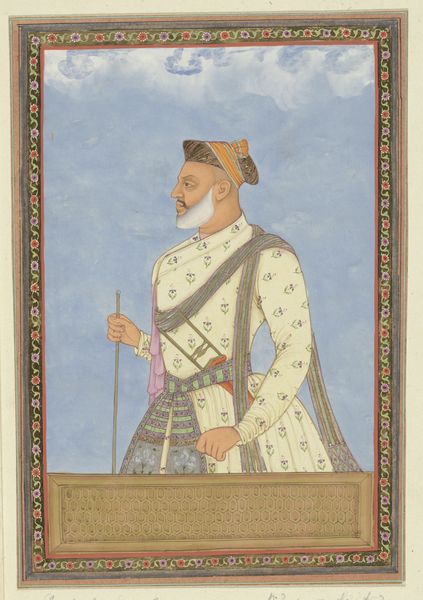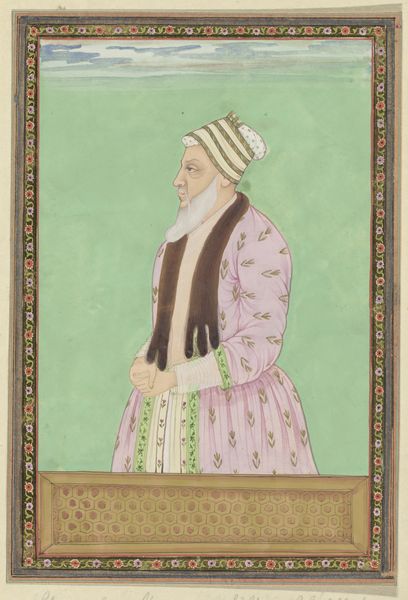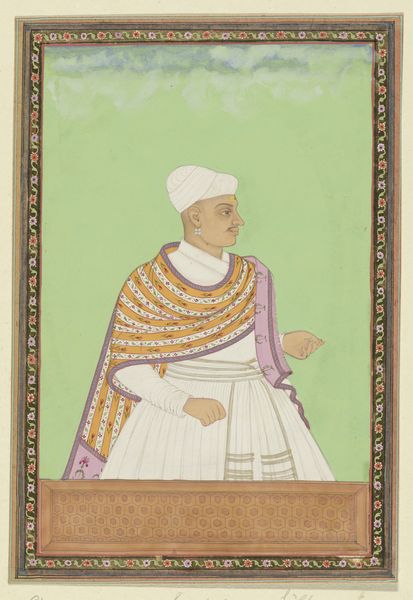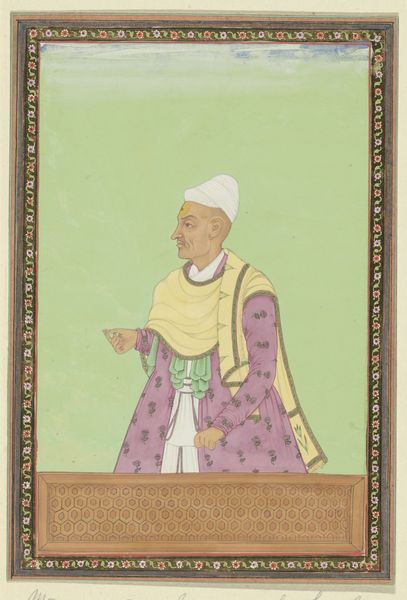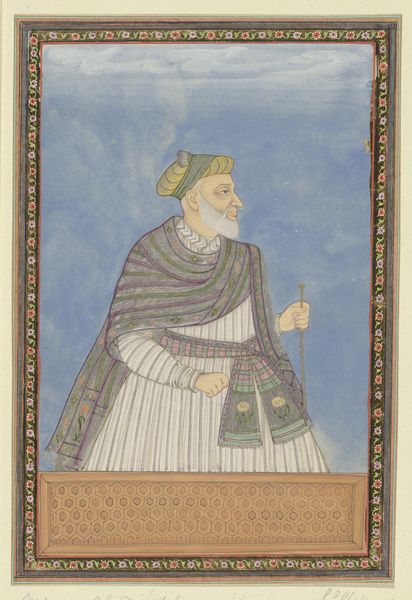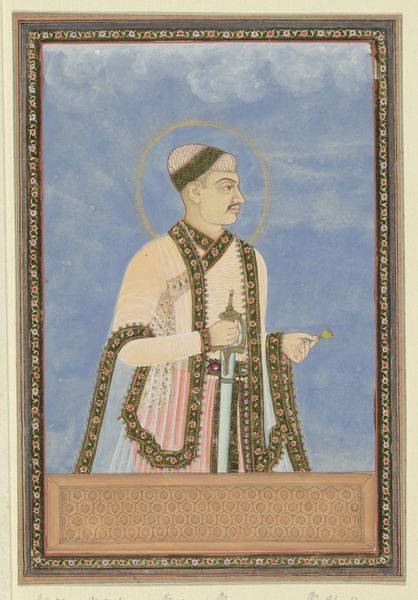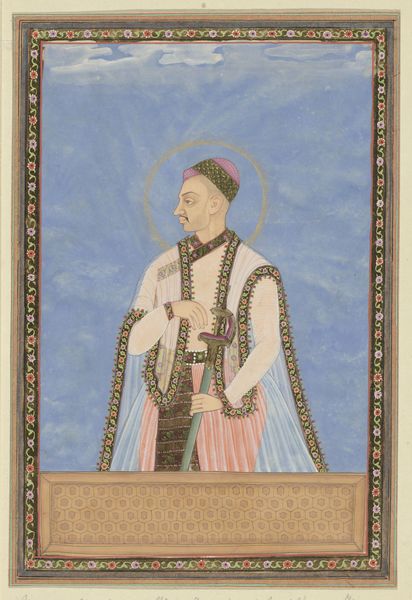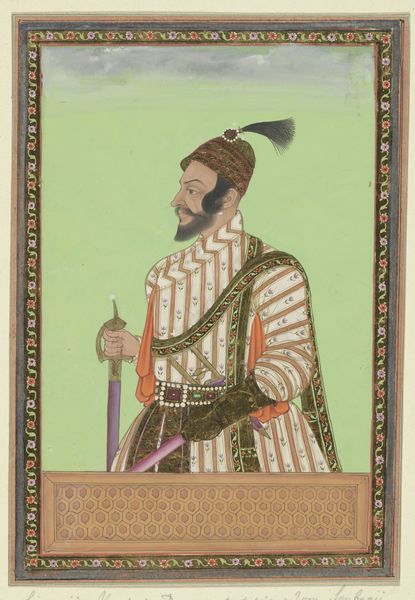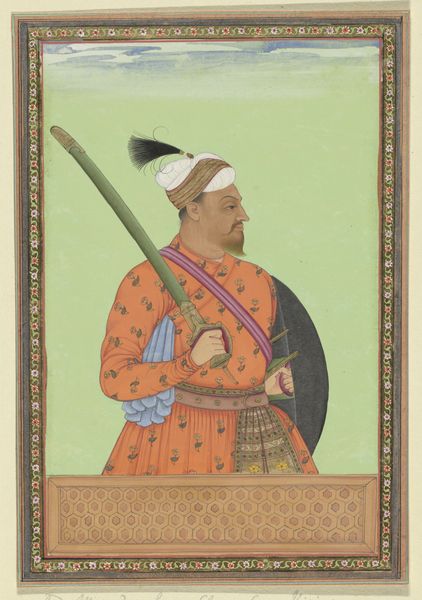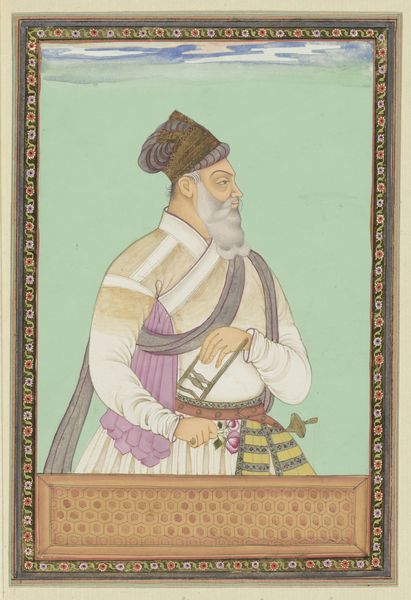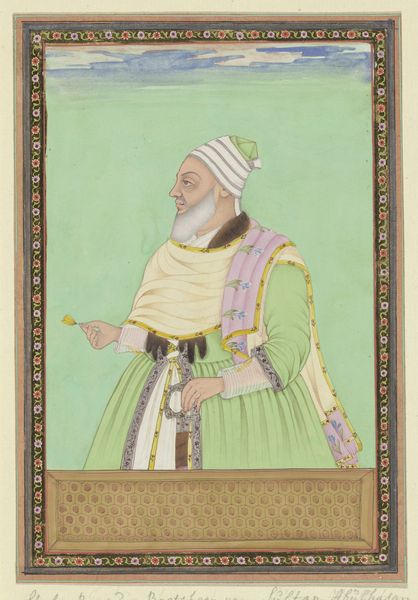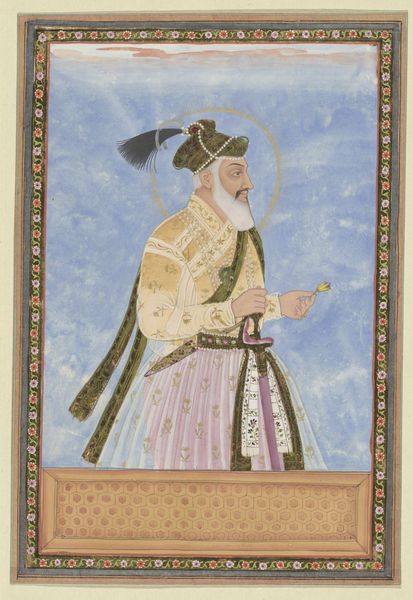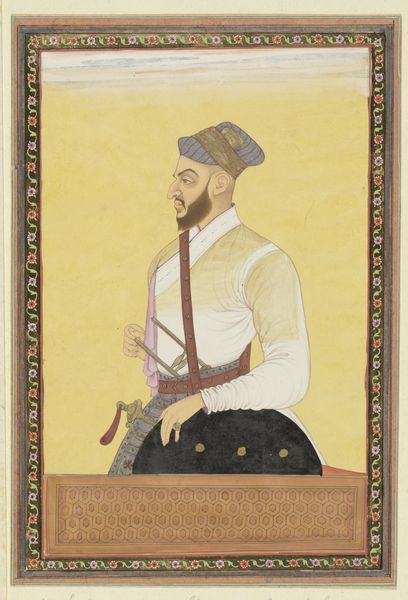
Portret van Neknam-khan; hij is vizier van Sultan Abdullah geweest en heeft gediend als legeraanvoerder (sar-lashkar) van Karnatak na Mir Jumla c. 1686
0:00
0:00
painting, watercolor
#
portrait
#
water colours
#
painting
#
asian-art
#
watercolor
#
miniature
#
watercolor
Dimensions: height 203 mm, width 140 mm
Copyright: Rijks Museum: Open Domain
Editor: Here we have an anonymous portrait from around 1686, titled "Portret van Neknam-khan," made with watercolors. The soft color palette gives it an almost ethereal quality, but the subject's stern gaze brings it back down to earth. What stands out to you in this piece? Curator: The portrait of Neknam-khan is more than just an aesthetic object; it’s a carefully constructed image designed to project power and legitimacy in a very specific socio-political context. Look at the detail given to his attire, particularly the sash. What does that tell us about his position, especially considering he served under both Sultan Abdullah and Mir Jumla? Editor: I hadn't really thought about the political implications. So, the clothing and accessories signify more than just personal taste? Curator: Absolutely. In this era, dress was a clear marker of identity, status, and allegiance. The way Neknam-khan presents himself speaks volumes about his role as a bridge between different rulers and power structures. Who was this portrait meant for and what messages was it supposed to convey? Considering the fluidity of power in the Karnatak region at that time, how did images like this shape perceptions and maintain order? Editor: So, it’s almost like propaganda, solidifying his image amidst political uncertainty? Curator: In a way, yes. And it raises critical questions about representation and the construction of identity, particularly within colonial contexts. What happens when artists, patrons, and subjects all come from vastly different cultural backgrounds and power dynamics? How do those differences manifest in the art itself? Editor: I guess I never really considered that the 'artist' isn't the only author of a work. Thank you for that perspective. Curator: It is essential to view art as a product and reflection of its time. This deeper understanding informs our interpretation.
Comments
No comments
Be the first to comment and join the conversation on the ultimate creative platform.
